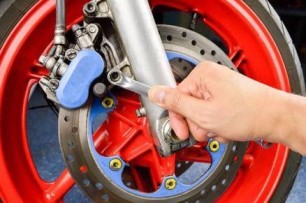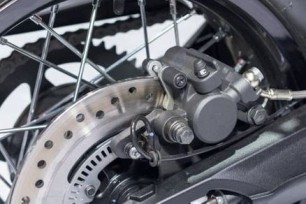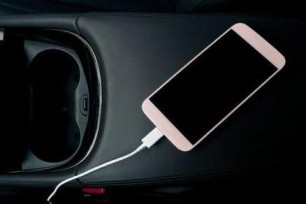General Insurance Blogs, Articles & Updates by - Magma HDI
Have us call you
- RENEW YOUR POLICY
- BUY NEW POLICY

Things to do after your car gets totaled post an accident
No one likes to think about the possibility of their vehicle being in an accident, but knowing what to do when it happens, helps you a lot. According to a survey, almost 77% of drivers have been in at least one accident during their lifetime. Thus, as per the facts, your chances of getting into a car accident during a 1,000-mile trip are 1 in 366.
After a car crash, your immediate response is to ensure everyone's safety and get medical attention even if the injuries seem minor to you. The immediate aftermath of an accident is quite stressful, and not knowing what should be your next step only adds to the stress.
Therefore, it is time you learn what to do when your car gets totaled post an accident.
After the accident, when you inform your insurance company about the incident to claim your insurance, the company may deem your car to be 'totaled'.
But, first, what exactly does 'a totaled car' mean?
• If the value of repairing the vehicle is more than the value of the car, pre-accident.
• If it can be dangerous to use the car again after the repair work.
Some companies cover the cost of towing the car. Few look after your rental car bills only for three days, whereas some might cover for an extended period. Different companies have different policies for the drivers. Therefore, it is better to be familiar with your private car insurance policy.
Now follow the given steps to claim your insurance settlement.
Step 1
Give your insurance company a call. Many companies have mobile applications where you can click images of the damage and post them, and an inspector will survey the specifics. But, when you think your car is totaled, it will take much more than a basic inspection to verify the damage.
Sometimes, there is not much visible damage, but some damaged parts of the car can cost much more than you anticipate. For this, you will have to trust your inspector to do a thorough inspection of your vehicle.
Step 2
Submit your application, policy details, and police report. Now, all companies have different documentation processes, and you must be sure to understand what papers you will need to submit precisely. Your settlement request would not proceed further unless the company has received all that it needs.
Step 3
Whether you own the vehicle or are leasing it, the insurance company will write a check to you, your lender, or the lease company. The amount of your total loss settlement will be the AVC, average cash value of your car, which depends on the following
• the current market value of your vehicle
• the condition of your car pre-accident as well as its mileage
• other features of the car such as leather seats, power windows etc.
Sometimes fortune turns harsh on us, and it becomes tough to accept the reality. Accidents can happen anytime, and it is rightly quoted that 'Accidents hurt, but not safety.' The recovery post a severe accident is never a peaceful process. Seeing your beloved car turn into crushed pieces of metal is an awful feeling. Don't wait for the worst to happen. Be prepared by buying private car insurance that assures you the complete assistance and compensation you expect during the tough times.
Need private car insurance? Click HERE to get the best insurance quotes.
Disclaimer: The information provided above is for illustrative purposes only. To get more details, please refer to policy wordings and prospectus before purchasing a policy.

Ten features that your car might have but you've overlooked them
You may be spending every day driving around in your car but not well aware of its every feature. We can guarantee you that you have missed out on more than one feature of your car. But you have got nothing to worry about as we have you covered.
Failing to notice each of your car’s features is quite common and happens to all of us. The reason could be because it is not in your direct vision or sometimes, we are just too caught up to notice it. People are not familiar with these high-tech vehicles yet, and it is understandable.
Allow us to introduce you to these amusing features that you probably overlooked.
1. A trunk that doesn’t require you to use your hands: Some new cars have these sensors that automatically unlock and open the trunk when you wave your palm in front of a sensor or detect your smart key in your pocket.
2. Extra storage space: Few cars come with hidden storage under the passenger seats or beneath the foot space.
3. Rearview mirror that dips: The rearview mirror has adjustable settings to keep you from blinding by headlight glare? To switch between “day” and “night” settings, you only have to utilize the tab below the mirror.
4. Sensors for lane centering: Another feature of self-driving technology works based on a camera installed behind the windshield to scan lane lines and alarm you if you go out of the lane.
5. Hooks for hanging things: Also called the takeaway hooks, these are commonly located near the headrests and above the rear doors. You will also find spaces to hang your shopping bags if you look closely.
6. Fuel-efficient body frames: Some cars feature aluminium frames instead of steel bodies to reduce their weight. It makes the car more fuel-efficient as it increases the speed and eventually improves the mileage.
7. Magic seats: This seat system allows you to fold the passenger seat entirely to increase your boot space.
8. Colour-coded cables: Many modern-day cars come with different colour cables in the hood so the driver can quickly know what to look for between maintenance. The oil cap, coolant, brake fluid, and washer fluid cables are all colour-coded for convenience.
9. Amplified soundproofing: Accelerometers fitted on the vehicle detect the motions and vibrations that generate noise. Then the Bose RNC technology sends a cancellation signal directly to the car’s sound system.
10. ESD: It stands for Electronic Stability Control. This feature automatically applies the car’s brakes to regulate a turn in tight corners or bad weather.
These are the top ten overlooked yet valuable features of newly produced cars that we accumulated for you. So, acquaint yourself with all the fantastic features of your vehicle and make your driving more comfortable and hassle-free than ever.
As much as it is fun to discover your car’s crazy features, it is crucial to look after its protection. Overlooking your car’s functions may not be a big deal, but ignoring your car insurance renewal is. Do not forget to keep your car insurance renewal on time to avoid interruption in receiving the policy’s benefits in terms of safety during the time of mishaps.
To buy or renew car insurance online, click HERE .
Disclaimer: The information provided above is for illustrative purposes only. To get more details, please refer to policy wordings and prospectus before purchasing a policy.

Planning to make modifications to your bike? Understand how it may impact your insurance
The craze of upgrading the look and feel of bikes has been a massive attraction, especially for the youth. These modifications are mainly made on the aesthetics or performance of the bike. However, people spend hefty amounts to get these modifications without considering their influence on the vehicle's insurance premium.
Also, know that not every modification is for looks and performance; some are for ensuring security. So, the question remains, how do all these modifications affect the insurance premium?
Below, we've explained all the types of modifications and their effect on your vehicle insurance premiums.
1. Modifications aimed at performance enhancement:
All bikers seek greater performance from their motorcycles. Whether it's a small or large modification, most of them enjoy altering things that they feel would considerably improve the performance of their bikes. Changes are done for faster acceleration, better handling, and effective braking.
Typically, insurance companies view such bike modifications as 'risky,' as more incredible speed increases the likelihood of an accident. As a result, they charge a higher premium for bike insurance.
2. Modifications aimed at aesthetics improvement:
Aesthetic changes improve your bike's visual appeal and give it a distinct appearance. For example, you may customize your bike by changing its colour, altering the seat cover, adding fibre components to bulk up the bike, or adjusting the headlights to make it look sporty. These upgrades come with an increased danger of your bike being stolen. As a result, the cost of your insurance premium may shoot up.
3. Modifications aimed at security:
Not all bike upgrades raise the value of the bike. Security upgrades might help you save money on your bike insurance premiums. Such changes are to reduce the likelihood of bike theft. Increasing the security of your bike with sensors, locks, and other such equipment can help you save money on your bike insurance.
Insurance companies provide discounts for installing anti-theft systems because they perceive it as a deterrent to theft. As a result, it is a win-win situation for both the insurer and the insured. To get benefits on your bike insurance rate, make sure you only install gadgets that have been certified by the Automotive Research Association of India.
4. Modifications aimed for specially abled persons:
If a rider is differently abled, his bike will be modified to accommodate his impairment, thereby allowing him to ride more comfortably and conveniently. There are no additional fees for such modifications. Instead, the insurance provider offers a discount to make these modifications.
Several factors influence the premium amount whenever you modify your bike. As a result, you must notify your insurer of any changes while purchasing bike insurance online or physically.
We all want to make our bike unique by personalizing it. However, before you make major changes to increase its appearance and worth, you may seek clearance from the ARAI and RTO about all the modifications. As previously indicated, modifications made for safety purposes will not raise insurance premiums, but those made for aesthetic reasons can be pricey. When purchasing or renewing bike insurance online, make sure to inform the insurer of any changes to avoid any hassles at the time of claim settlements.
Click HERE to get the best two-wheeler insurance for your modified bikes.
Disclaimer: The information provided above is for illustrative purposes only. To get more details, please refer to policy wordings and prospectus before purchasing a policy.

Know about these cool technologies for safe two-wheeler rides
With increased riders' registrations and two-wheelers plying on the road, motorcycling is becoming more popular in India, thanks to new technologies mainly observed in cars. This digitalization in the automotive industry helps improve fuel efficiency, reduces emissions, and eliminates the possible risk for the two-wheeler and rider.
Manufacturers are steadily researching new technologies to make the bike experience safe. This article will look at a few inventions that have revolutionized how we think about motorcycle safety.
1. Anti-lock Braking System (ABS):
Anti-lock Braking System prevents the wheel(s) of a motorbike from locking up during hard braking. This technology employs speed sensors on both wheels to correctly estimate wheel speed and recognize when a wheel will lock.
This mechanism adjusts the braking pressure to prevent the tyres from locking up and maintain the motorcycle's balance. It also helps to minimize braking distance in several situations. Motorcycles equipped with anti-lock brakes are less likely to meet an accident on the road.
2. Traction Control System (TCS):
Traction control avoids drifting while accelerating on a slippery surface. It limits engine power until the bike can travel without the wheels slipping and provides maximum turning stability.
The sensors and the Electronic Control Unit are the two primary components of a traction control system. The ECU captures data on gravitational forces, lean angles, and other factors. The sensors are constantly updating raw data about the motorcycle's present location. This information helps to adjust the amount of power sent to the back wheels and prevent skidding.
3. Slipper clutch mechanism:
A slipper clutch aims at reducing the effect of engine braking when the rider decelerates. It works by transmitting braking force through the chain drive, making the rear wheel shake and lose traction when the back wheel tries to move the engine quicker than it would under deceleration. The slipper clutch partly disengages the engine until the conditions are suitable for reengaging.
4. Tyre Pressure Monitoring System (TPMS):
This technology works by installing pressure monitoring sensors inside each tyre's valve. These sensors collect data from each tyre, send it to a module that compares it from both tyres and notify the rider if any tyre has low, high, or uneven pressure.
Low tyre pressure can cause slow handling, increasing your chance of meeting an accident. The TPMS technology assists you in avoiding such instances.
5. Ride By Wire technology (RBW):
Ride-by-wire is a new-age acceleration system; it eliminates the need for cables. It's an electronic throttle system that removes the mechanical throttle wire's coupling to the acceleration handlebar. This unique system results in faster and more accurate throttle response.
These cutting-edge technologies are helping bikers with safer riding experiences. As a rider, make sure your bike has these advanced safety features to provide you with a comfortable riding experience and the best possible protection. While you get prepared to upgrade for a bike loaded with these new safety-enhancing features for your bike, also remember to have valid two-wheeler insurance; not only is it necessary, but it is mandatory by the law. Always remember to get ideal 2 wheeler insurance online to improve your safety!
To know about the best 2 wheeler insurance online, click HERE .
Disclaimer: The information provided above is for illustrative purposes only. To get more details, please refer to policy wordings and prospectus before purchasing a policy.

How to ensure the safety of pillion riders during bike journeys
If you travel daily to work together or plan long rides during holidays, riding with a co-passenger always makes a journey lively and enjoyable.
Riding a two-wheeler demands alertness at all times. But, being accompanied by a pillion rider requires more vigilance. Most riders have a basic understanding of riding a bike safely, however, things change a lot when riding with a pillion rider.
Being a responsible rider, you must ensure the safety of your riding partner too. Any injury to the pillion rider might detract from the enjoyment of your travel. In this space, we’ve emphasized how to safeguard your co-rider during your bike trip.
1. Basic dos and don’ts for the pillion:
Dos:
• Always maintain a constant posture and balance your body weight
• Assist with the navigation
Don’ts:
• Never engage the rider in too many conversations and unnecessary distractions
• Don't shift your body weight to the rider
• Avoid sudden reactions or jerky movements
2. Best use of a seat and a backrest:
An uneasy pillion passenger may shuffle in their seat, resulting in a persistent state of unbalance. Hence, investing in a decent quality backrest can be of great help. It not only guarantees the pillion rider’s comfort but also keeps the bike from losing balance.
3. Check your two-wheeler’s suspension adjustment:
A pillion rider results in a greater centre of gravity, which can affect the bike's handling. As a result, make sure your bike’s suspension is adjusted correctly. For example, installing an adjustable rear shock might assist you in achieving the proper setup for riding with a pillion rider.
4. Pay attention to your braking and turning:
These are the two factors that have a significant influence on a two-wheeler’s balance. Keep your speed under control, specifically on the turns. Also, practice a progressive braking technique rather than grabbing a fistful. These are the two moments in which you should be aware of the presence of a pillion rider and alter your movement accordingly.
5. Communication is the key:
Some co-passengers feel uncomfortable while riding. They are scared of speed or sharp turns and find it difficult to adjust with maneuvering. Your pillion rider must know your motorcycle riding skills and is comfortable while on the road. You should have the transparency to tell the other person to speak out the fear, and you can accordingly adjust the speed to make the co-passenger comfortable. If you are riding with someone, always make sure you both can talk things out comfortably and enjoy the ride without hesitation.
6. Safety should always be a priority:
One cannot compromise safety, especially when riding with a pillion rider. As two-wheelers are more prone to road accidents, it’s your responsibility to take safety measures seriously. Invest in good quality riding gear, purchase ISI-certified helmets for you and your co-rider. Don’t let unfortunate incidents affect the excitement of your ride. Check for bike insurance online, browse through different options, and buy one to avoid financial setbacks in case of damages.
Making your pillion rider feel safe about riding with you is important for a pleasant ride. There has to be trust and understanding between both riders. Take extra care when riding with kids or older people. Cover distances together but keep safety and comfort as the priority.
Looking for bike insurance online, click HERE .
Disclaimer: The information provided above is for illustrative purposes only. To get more details, please refer to policy wordings and prospectus before purchasing a policy.

How to install WiFi in your car and make it a moving hotspot
The internet is a whole new universe that is opening up several opportunities for people. It is a clear manifestation of innovation and endless possibilities. And WiFi lets us access the internet quickly at reasonable rates.
For almost all the new car buyers, cutting-edge features such as WiFi connectivity is increasingly becoming popular. With WIFI onboard, you feel like resting on the couch at home and accessing social media, working on the go, checking important news, or having quick connectivity with emergency services and navigations.
So, how do you install WiFi in your car? Nearly every new car variant provides an in-built WiFi feature. But if you are not changing your vehicle anytime soon, read through the different ways to install WiFi in your car and make it a moving hotspot.
1. Use your phone as a WiFi hotspot:
All smartphones have the option of enabling personal or WiFi hotspots, and it can be an excellent quick fix. But it is not a long-term solution for a few significant reasons- iPhone allows five devices at a time to connect to a hotspot. In contrast, Android allows ten users, consuming a lot of data from your limited Internet plan. Can an unlimited data plan solve the problem? No, because this is data tethering. Therefore, many Internet-providing companies restrict the amount of data you can transfer through mobile hotspots. Also, switching on the hotspot will drain your cellphone's battery quickly.
2. Buy a portable hotspot device:
It is perfect for people having mobile offices. Just a suitable hotspot device is enough to send emails, have meetings, even a quick refreshing episode of your favourite series. A mobile hotspot device is a portable WiFi router that also has a cellular connection. It uses data, but not from your smartphone plan but a different internet plan instead.
You can either pay a monthly cost or with the "pay-as-you-go" option. But these devices require electrical power, which you can supply from the car's electrical outlet, the cigarette lighter, or a USB port. You can opt to buy a device designed to plug into the USB port of the laptop.
3. Go seamless and install a wireless router:
These are similar to the ones at your homes. You can also install a wireless router in your car, but you will need to buy a data pack with it. This is ideal for business vehicles requiring configuring for mobile connectivity, but for casual users, the whole process of installing can be a little expensive.
With remote working influencing our lives profoundly, making your car an internet hub can help you explore unique touchpoints of joyful experiences. Now, with the advancements of internet mobility, you can plan frequent business trips that allow you to work along with the luxury of travelling, access real-time traffic data, or navigate smoothly with the help of enhanced maps.
But remember, before choosing a way to install WiFi in your vehicle, consider factors like affordability and data usage per day. Thus, calculate the other maintenance costs, car insurance renewal, commuting costs before adding extra WiFi expenses. In the end, it is about your personal preference and weighing the pros and cons.
Click HERE to know more about motor insurances for your car.
Disclaimer: The information provided above is for illustrative purposes only. To get more details, please refer to policy wordings and prospectus before purchasing a policy.

How to be the saviour of bike accident victims? Know about these first aid tips
According to government data, 50% of India's road accident deaths might have been avoided if the injured had received basic first aid within an hour of the accident. Generally, before the paramedics arrive, police and pedestrians are the first ones to be present at the spot of the accident. If they have proper knowledge about first aid, they can be the link between the life and death of an individual. These quick points will help you learn some essential first aid tips if you find yourself in a similar situation.
1. Look for injuries:
When you're at the scene, clear out the traffic, and importantly, don't panic. Take the injured person carefully to a safe place and quickly look at all the injuries they have. Excessive blood loss is the main reason for the wounded person succumbing to the accident. If the victim is losing too much blood, tie the part above the wound to restrain blood flow and avoid further loss.
Important tip: Many individuals have their first aid kits on the bike; you can use the bandages from the first-aid kit to help you with the first aid tasks.
2. Call an Ambulance right away:
102 is the national helpline number for the ambulance service. To the best of your knowledge, provide whatever information asked by the dispatcher.
3. Check the victim's air passage:
It's critical to check the airway to ensure they're not facing breathing difficulties. Then, constantly, keep checking their pulse and feel their nerves.
If the victim is responsive, it's a good sign that means they can breathe. But if the victim is unresponsive, make sure you put them in such a position that opens their airway. Here's how:
• Gently tilt the victim's head backwards by holding their forehead
• Lift their chin vertically upwards by placing two fingers beneath the bony area of their chin
4. Perform CPR:
If the process mentioned above didn't work, try combining it with CPR. It will assist in the re-establishment of the circulatory and respiratory systems. Here's how you can do it:
• Rest the victim on a plain flat surface
• Interlock your fingers and place your palms facing down on the chest for compression; push down on the chest for roughly two inches. Repeat for a total of 30 compressions
• If you notice that CPR is working, place them in the recovery position (on either of their sides). Make sure to support their neck to prevent additional damage
5. Keep the victim warm at all times:
When an injury is severe, the core and skin temperatures can drop considerably. This can lead to hypothermia and worse death. It's crucial to keep the victim warm, so use anything you have on hand, whether it's a jacket, a blanket, or a pullover. Try to provide good support to the spine of the injured.
Don’t over-exert yourself in your attempt to revive the injured; it might worsen the situation. You need to understand that you’re not a medical professional, so whatever you do involves potential risks. It is righteous to save lives, but only within the boundaries of our expertise, knowledge, and capacity. Your best care during the ‘Golden hour’ can give someone a new life.
We’ll witness an accident or a medical situation that needs our assistance at some time in our lives. But remember that it can be the other way around; you might get caught up in an accident. In such times any aid is of great help. Safety first is what you should bear in mind when riding the bike. Ride with proper safety gears for uncompromised security. You can rely on Magma HDI bike insurance online plans to provide an additional layer of protection to your bike. Buy bike insurance online if you haven’t got one yet.
Click HERE to know more about the best bike insurance online to keep your bike and finances safe.
Disclaimer: The information provided above is for illustrative purposes only. To get more details, please refer to policy wordings and prospectus before purchasing a policy.

How are hybrid cars a boon for our environment
Hybrid vehicles are the next significant advancement in the automobile's evolution. They combine the best features of both classic internal combustion engine vehicles and modern-age electric cars. In practicality, both electricity and petroleum power the motor of a hybrid vehicle, making them incredibly fuel-efficient. As a result, a hybrid automobile consumes less than half the fuel as a regular family car. This also means that they are not only cost-effective but also environmentally sustainable.
Unlike electric vehicles, hybrid cars don't have a plug-in system for charging the batteries. Instead, these vehicles use kinetic energy to charge the batteries. Hybrid vehicles are gaining popularity and are making headlines of a green revolution worldwide. In this article, we'll see precisely how.
1. Lower carbon footprint:
Hybrid vehicles lower carbon emissions while boosting fuel efficiency by combining power from both electricity and fossil fuels. The vehicle generates its power with the help of energy stored in its lithium-ion batteries and supplied to electric motor generators on the electric side. These motors provide power to the wheels while simultaneously generating electricity through regenerative braking. Hybrid vehicles do consume gasoline, but they do it with small engines that produce low emissions. The engines are either employed to create electricity for the batteries or power the electric motors.
2. Hybrid vehicles have better mileage:
In addition to advancements in engine technology, characteristics like lighter chassis material, stronger tyres with greater pressure, better aerodynamics, and a smaller fuel tank helps a hybrid car be more efficient and save money on petrol, contributing to reduced usage of fossil fuels.
3. Hybrid cars make little to no noise:
Among ecologically sustainable automobiles, hybrid vehicles occupy centre stage. They are known for being extremely quiet in urban traffic circumstances, in addition to emitting less pollution. They may be able to lessen urban noise pollution as a result of this. You might not hear anything at all if a hybrid car drives down the street. It’s that swift and silent!
4. Recycled material goes into the making of hybrid cars:
To build automobile components, hybrid car manufacturers blend automotive eco-plastic with regular plastic. This is not only environmentally beneficial but also cost-effective. Its environmental impact is most apparent when looking at the overall effect of mass manufacturing rather than on a case-by-case basis.
5. Car battery production can be environment friendly:
Although hybrid automobiles do not contribute much to road pollution, the production of their batteries can be hazardous if done incorrectly. But the corporations are developing more environmentally friendly production lines to ensure minimum pressure on the planet.
Also, suppose you compare the carbon emission caused by the production of batteries to the carbon emission of cars running on fossil fuels in the longer run. In that case, hybrid vehicles prove to be more sustainable.
Finals Thoughts
Despite being still a relatively new technology, Hybrid vehicles will only get more advanced and sustainable as time goes on. Moreover, as the pollution created by ICE cars becomes a more significant problem, hybrids provide a rational option for a cleaner future.
Like traditional cars are subject to mandatory insurance in our country, hybrid vehicles are no exception. They need to have a motor insurance too. So if you're planning to join this electric revolution happening in our nation, have thorough research on the best car insurance online that provides an insurance cover to your next hybrid vehicle.
Click HERE to know the best car insurance online.
Disclaimer: The information provided above is for illustrative purposes only. To get more details, please refer to policy wordings and prospectus before purchasing a policy.


